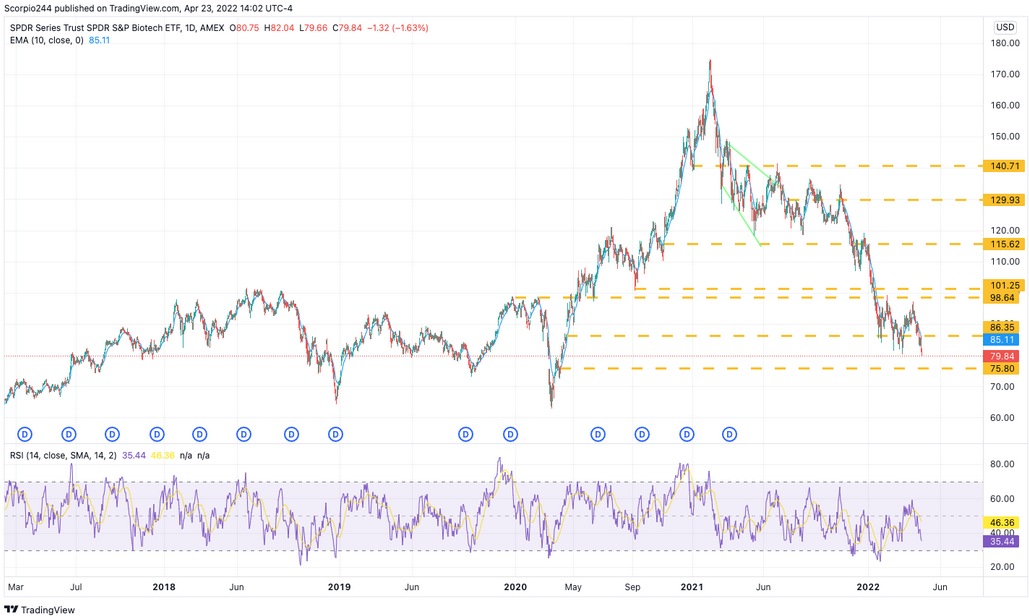The week ending Apr. 22 was brutal. The S&P 500 fell by nearly 2.75%, but it was much worse than that. Because the index rallied hard to start the week, which typically happens following a monthly options expiration date.
But then Powell unleashed hell when he noted that a 50 bps rate hike was on the table for the FOMC meeting in May, and stocks dropped.
From the Apr. 21 high, the S&P 500 dropped 5.3% in nearly a straight vertical line down. It was even worse for the NASDAQ 100 Invesco QQQ Trust ETF (NASDAQ:QQQ), which fell by almost 6.5%. One of the most breathtaking declines I can recall since March 2020.
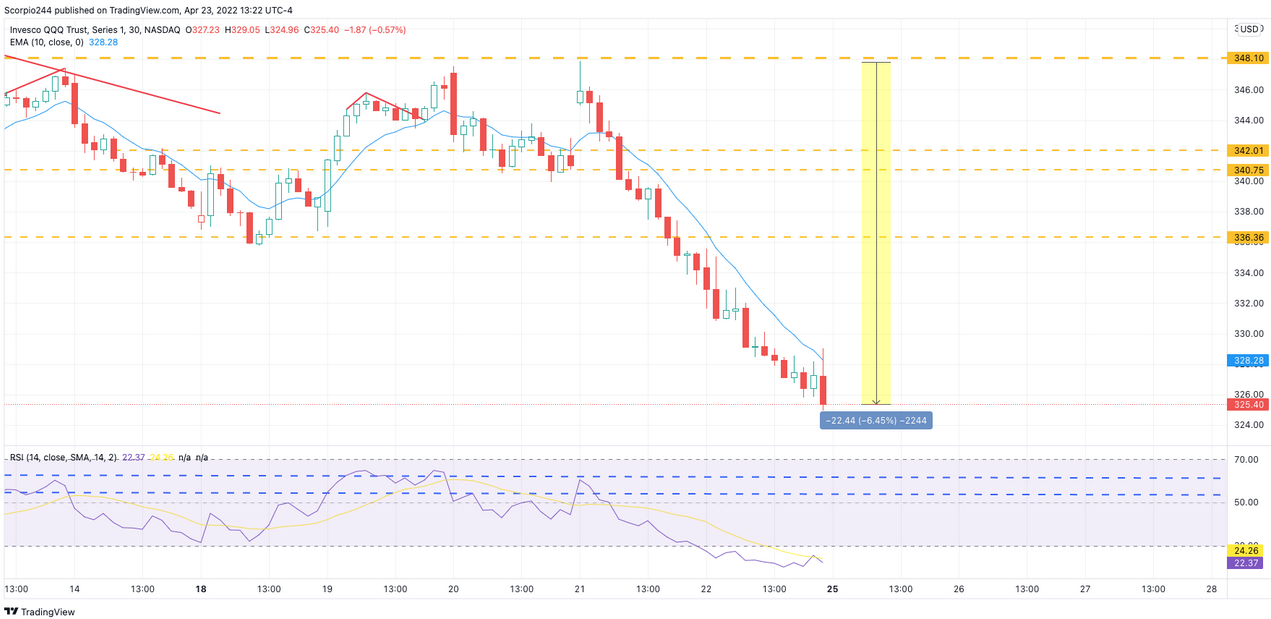
Many people are calling for a bottom on social media, but I don’t see how that is possible, not if you listen to what the Fed is saying, and Powell made that very clear this past week.
The Fed wants financial conditions to tighten and probably wants those financial conditions to be above neutral so that financial conditions harm the economy.
History tells us there is no way stocks can thrive in that environment. I have gone over this same topic for months now, warning since the summer of last year, that the Fed would tighten financial conditions and stocks would suffer.
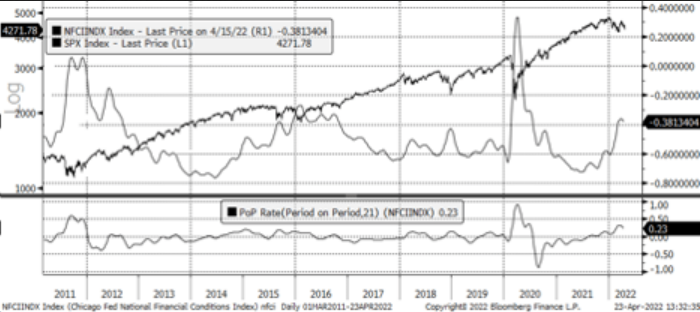
On top of this, the Fed is planning to reduce its balance sheet by around $100 billion a month; this too will work to tighten financial conditions and reduce margin levels in the market.
The Fed has yet to even start reducing the balance sheet, and still, since October, margin levels have fallen sharply. Also, reserve balances held by banks at the Fed have already started to decline, negatively affecting margin levels as well.
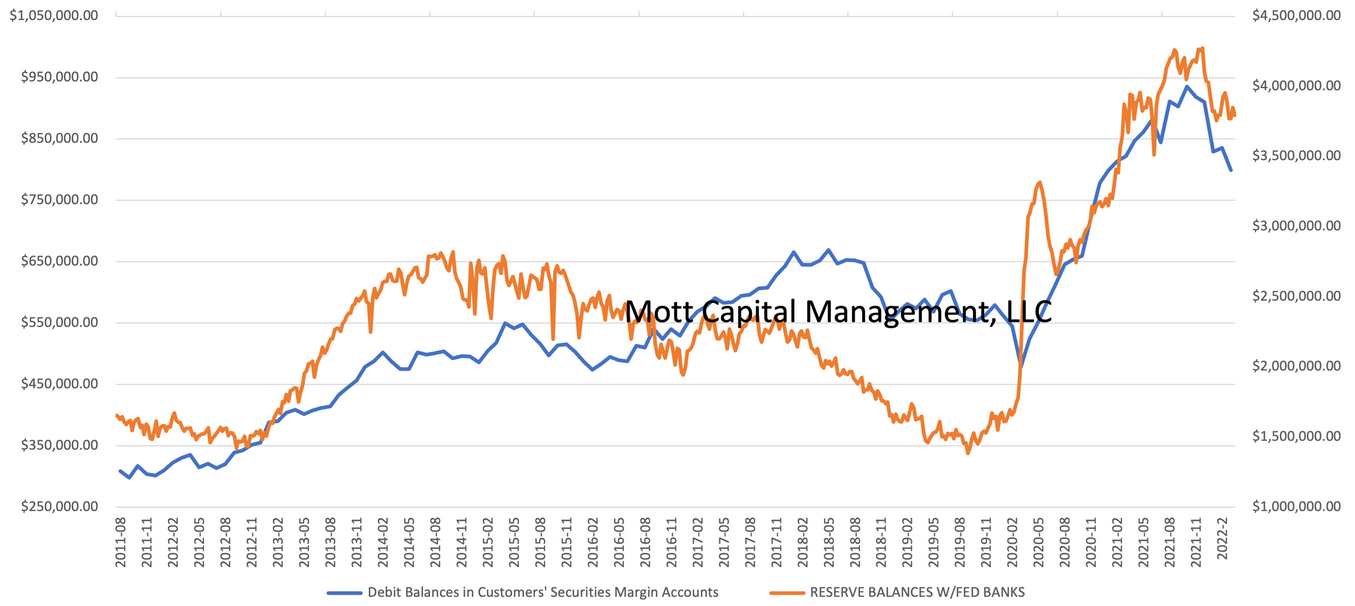
The further margin levels fall due to tight financial conditions and reductions in reserve balances, the more pressure there will be on the equity markets.
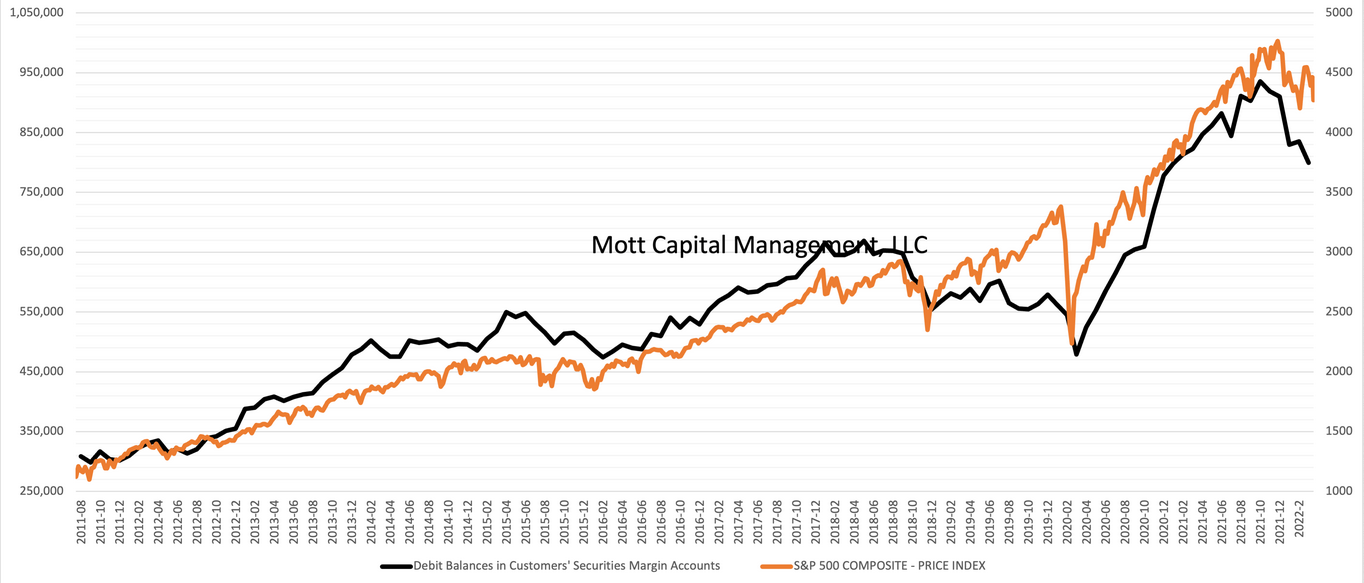
I have been following these relationships for some time, and just this past week, there has been a massive reduction in reserve balances when the Treasury took money out of its general account that is held at the Fed.
This led to reserves dropping to $3.3 trillion from roughly $3.8 trillion in one week. This decline should significantly impact equity prices over the next two weeks. Fighting the Fed at this point doesn’t seem wise.

1. S&P 500
The S&P 500 is now trading below its 10-month exponential moving average, which in the past has signaled a reversal of the trend for the index.
The month isn’t over yet, but the index needs to rally back to 4386 to be above that moving average by month-end.
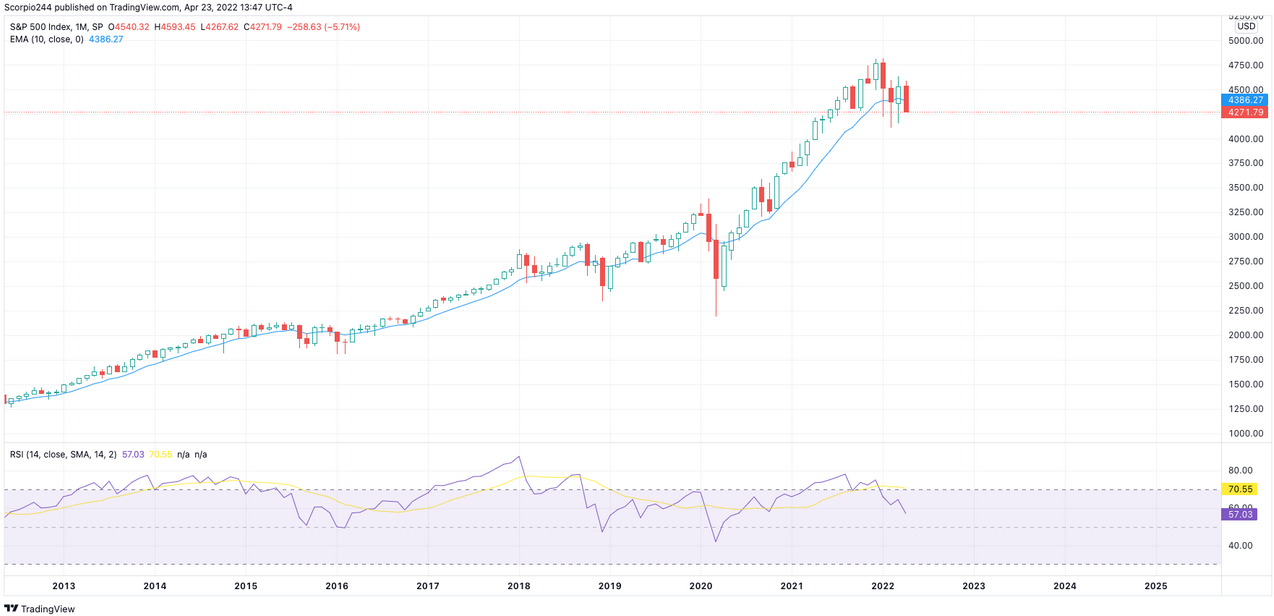
Additionally, there is still that unfilled gap on the index, around 4,170, which is likely to be filled soon.
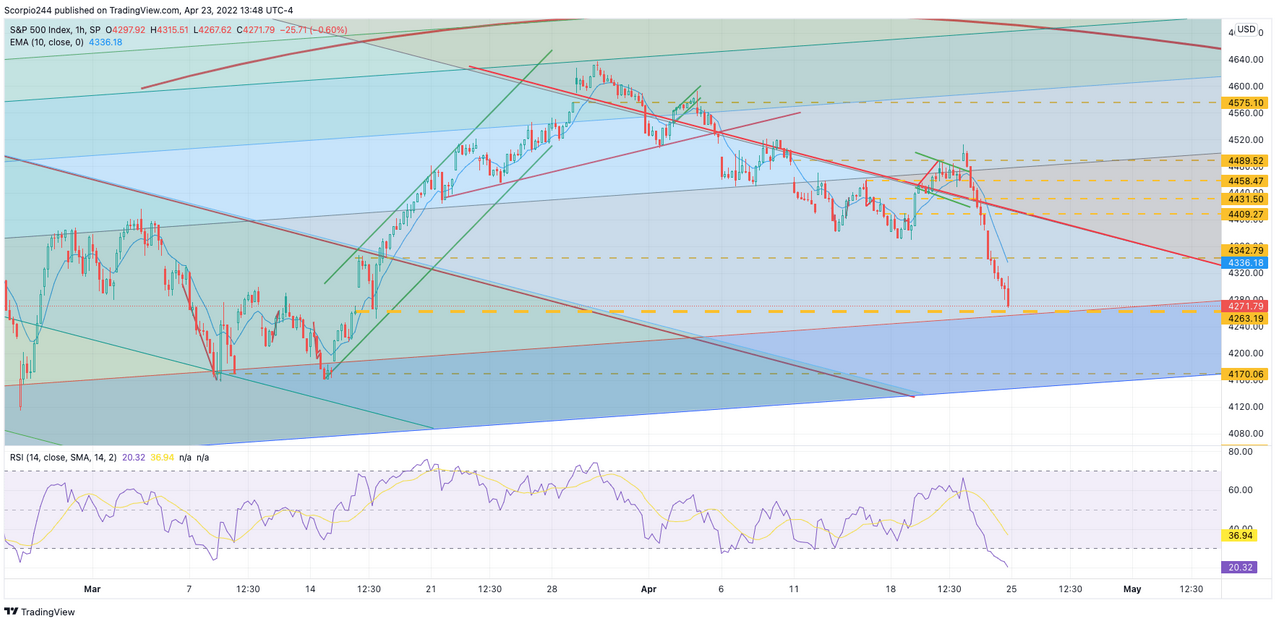
2. VIX
The VIX did move up on Thursday and Friday, which means the odds of a Vanna rally early next week have increased.
Although I would not expect a rally to last because investors will need to keep buying puts heading into the FOMC meeting on May 4. It seems possible that the S&P 500 rallies back to the 4,330s before the next leg down starts.
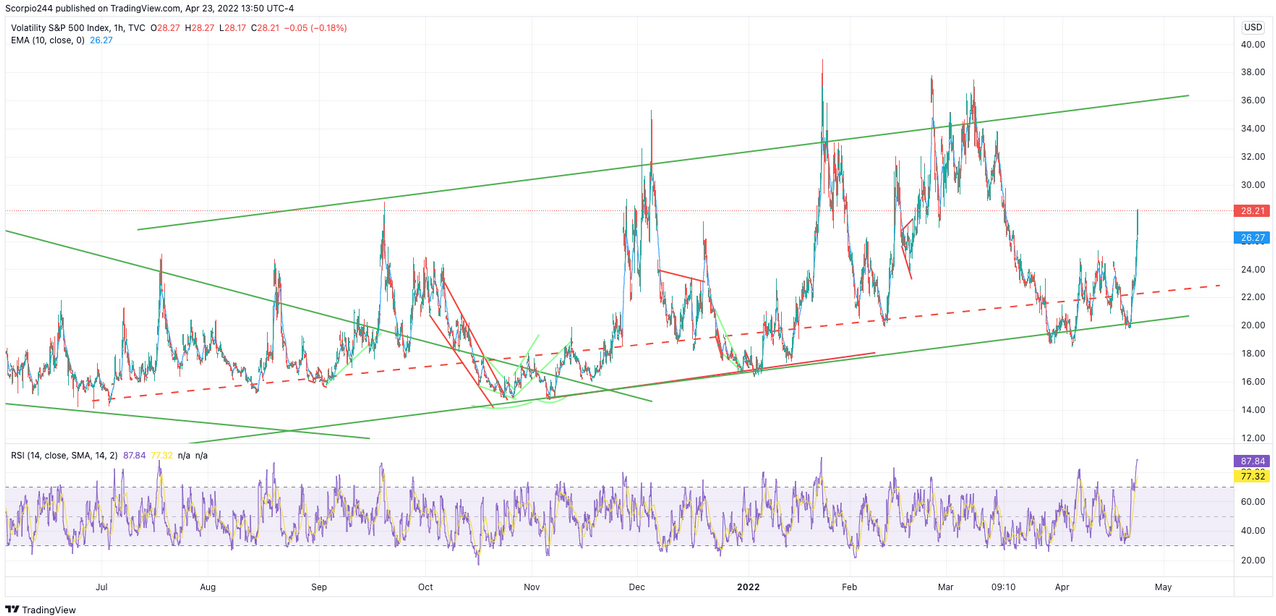
3. NVIDIA
NVIDIA (NASDAQ:NVDA) continues to fall and has now dropped below $200 for the first time since October.
The shares are now down more than 40% from their all-time high, and I don’t think the selling is over yet. The next logical resting place comes around the low $180s.
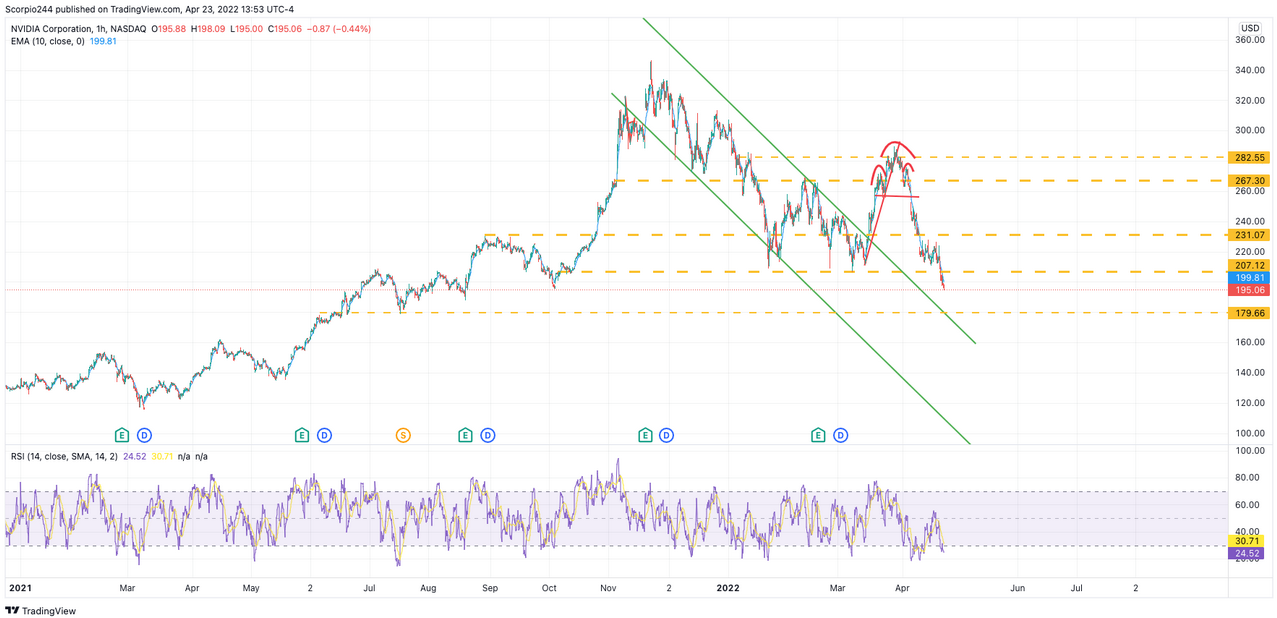
4. Adobe
Adobe Systems (NASDAQ:ADBE) made a new closing low on Friday and is one of the stocks to be watched. If it continues to drop, it tells us that the next leg in the S&P 500 and NASDAQ will result in a lower low.
The next big area of support for Adobe doesn’t come until the low $390s, after that there is a long way down into the $320s.
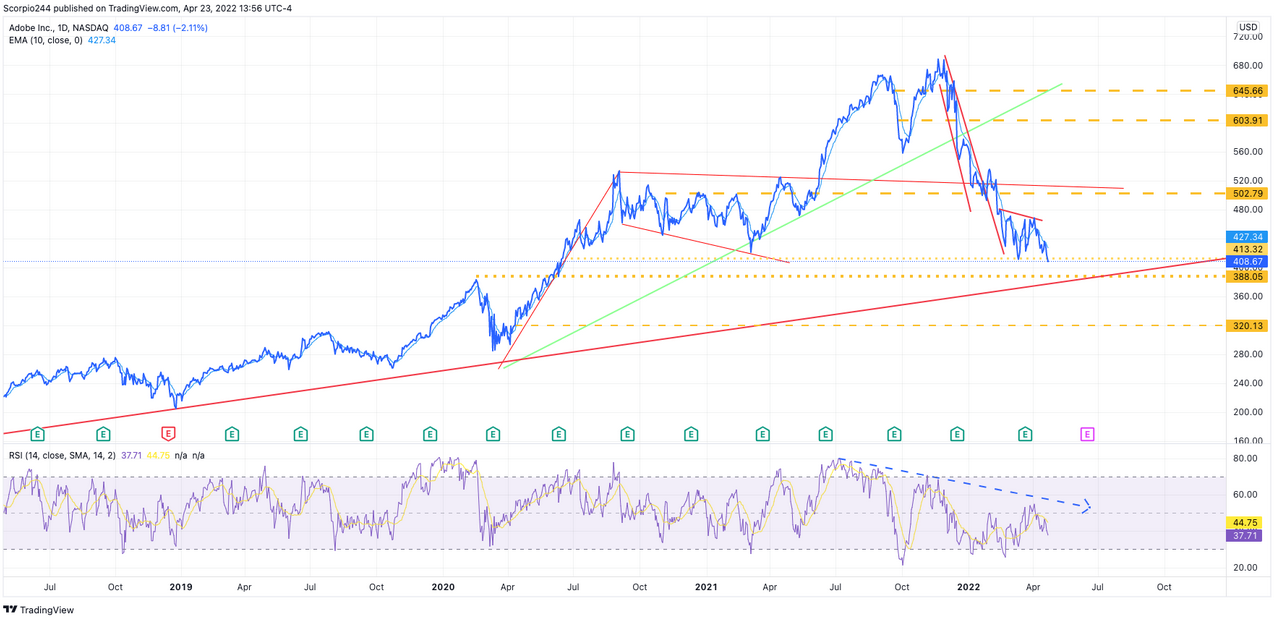
5. Block
If PayPal Holdings (NASDAQ:PYPL), Shopify (NYSE:SHOP), and other stocks are all trading below their pre-pandemic highs, why isn’t Block (NYSE:SQ)? For that to happen, it has to drop below $83.
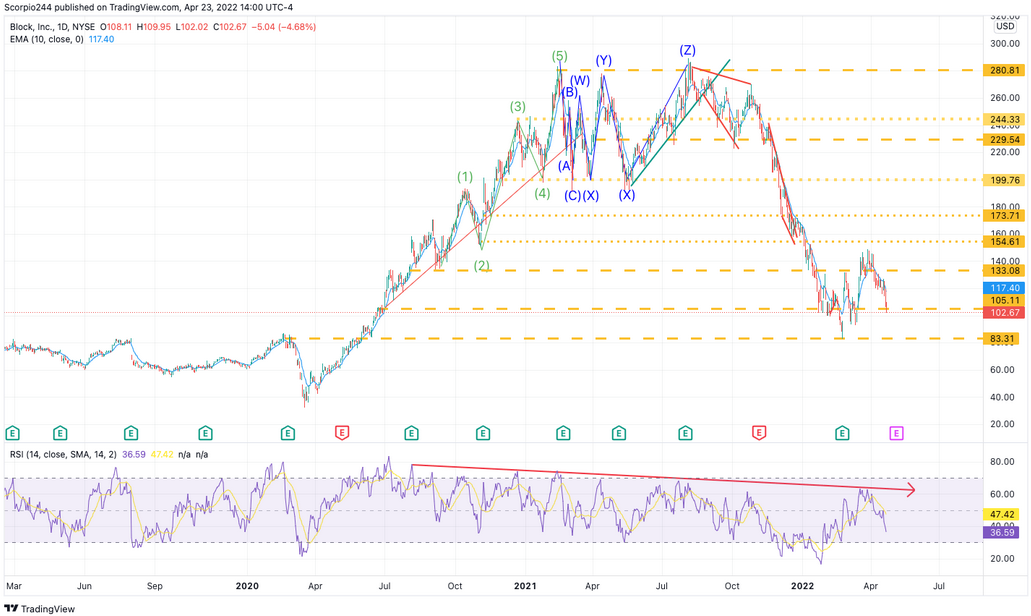
6. Biotech ETF
It doesn’t look good if the biotech sector is a sign of things to come for the broader market. The SPDR® S&P Biotech ETF (NYSE:XBI) is now trading not only at pre-pandemic levels, it is trading approaching its March 2020 lows.
That’s how bad it has gotten for that sector and an indication of the market’s risk appetite.
